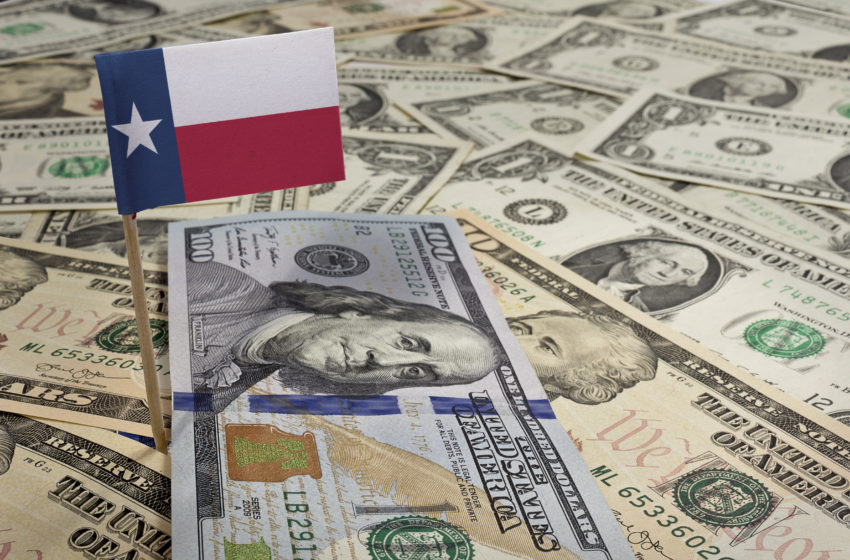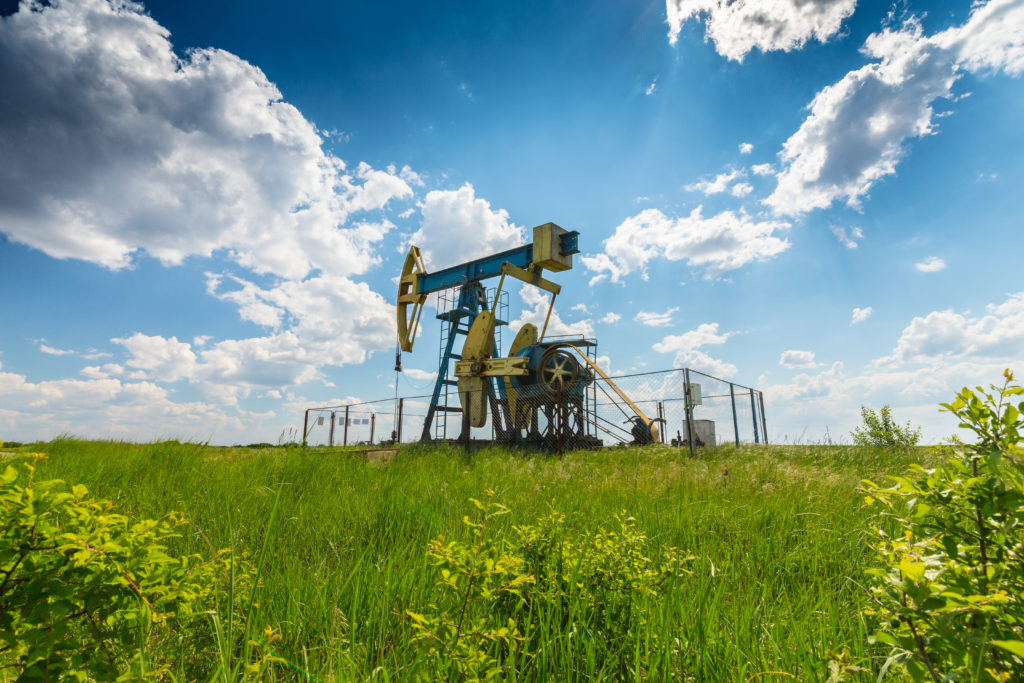The Short-Term Outlook for the Texas Economy

The inevitable result of measures to “flatten the curve” and prevent a major spike in COVID-19 infections has been a strong shock to the economy. Many factors will determine the ultimate effects of the coronavirus on the economy, most of which are highly uncertain at present. The outcomes of reopening the economy and the capacity of businesses to resume normal activities are among myriad phenomena that will play a significant role.
Our most recent Texas economic forecast from The Perryman Group, an economic and financial research firm based in Waco which has been studying the Texas economy for more than four decades, calls for a significant drop in business activity for 2020, but a return to growth next year. Measures taken to slow the spread of COVID-19 have had substantial negative effects, including causing downturns in key export industries such as oil and natural gas. However, the state is well positioned to return to growth once social distancing requirements can be relaxed and the economy fully reopens.
The Perryman Group’s most recent short-term projections for the national economy indicate a decline in real gross product at a -5.47% rate in 2020, representing a loss of more than $1.0 trillion. For 2021, real gross product is forecast to grow by $973.7 billion, a 5.40% rate. Job losses are forecast to total more than 9.818 million on an annualized basis in 2020 (a 6.49% decline), with 5.19% growth expected in 2021. These job and output losses are reported on an annualized basis; thus, many more individuals are being affected for a portion of the year (as an example, an annualized job can be three individuals who are each unemployed for four months) and the annualized loss in gross product is much larger at present.
Recovery from the COVID-19 Pandemic
Massive layoffs and a sharp increase in unemployment has led to ubiquitous comparisons of the current downturn and the Great Depression. However, prior to the Great Depression, there were massive structural problems in the economy, and policy responses were less well understood. The major harm of the Great Depression was not that joblessness spiked above 30%; it was, rather, that it remained there for almost a decade.
Unlike the Great Depression, the dot-com debacle, the savings and loan mess of the 1980s, or the more recent Great Recession, there is not an overarching major problem in the existing economic structure (such as an overheated market ripe for a crash). A combination of unique and unprecedented issues is causing slowing, but as they are dealt with, we forecast that growth will pick up.
In fact, while The Perryman Group expects economic patterns for the next couple of years to be very different from the firm’s projections prior to the outbreak, there is not yet evidence that the long-term outlook for the Texas economy should be modified.
Oil Market Turmoil
In Texas, the oil situation is especially significant to the economy. At the beginning of this year, oil prices were trending in the upper $50s per barrel. As demand dropped in response to COVID-19 restrictions, spot prices fell to a fraction of that level and futures prices actually became negative at times as contracts neared maturity and traders scrambled to avoid having to take delivery of oil at a time when storage capacity would be largely exhausted. The price decline is due to the combination of
(1) plummeting demand as economies and industries around the world shut down due to COVID-19 and
(2) rising supply, with threats of even more due to the collapse of talks earlier this year among major global oil producers who sought to bring discipline to the market.
The most recent agreement by OPEC+, the United States, and other nations, which came only after initial efforts failed and the market endured further turmoil, is not sufficient to rebalance markets due to the unprecedented effects on demand of shutting down huge segments of the world economy. It is, however, an important step to keep the supply overhang from getting as big as it would otherwise (as this is being written, prices have been restored to the mid-$30s per barrel at this is being written).
Although production costs are down sharply in Texas, they are not yet at a level that can maintain viability at recent prices. As a result, the situation is leading to significant disruptions in the Permian Basin and the state’s other production areas. The industry has engaged in a rapid shutdown of drilling activity, which ripples through an enormous supply chain and supporting retail and service enterprises in the affected communities and the rest of the state. Banks with large energy company loan portfolios are being strained, and midstream and downstream investments are being deferred. We are seeing these dramatic adverse effects on oil-producing areas, but the fallout from the situation involves all regions of Texas.
As the economy begins to recover from COVID-19 restrictions and travel prohibitions, oil markets can normalize expeditiously. Prices are already trending toward more normal levels and should recover to sustainable levels for West Texas producers (where costs were falling notably for years before the pandemic) in the next few months.
This Is Not the 1980s
With the oil market in disarray, comparisons are also being drawn to the horrific events of the 1980s. While such discussions are both natural and inevitable, they are also misplaced and incorrect. Here are five major reasons why.
- The first key difference is the sheer speed of the downturn. The prior decline began in early 1982 and did not reach its nadir until a rapid fall in 1986. This time, it unfolded in a matter of weeks.
- Second, the 1980s debacle occurred amid a savings and loan and real estate crisis and ill-conceived reversals in tax policy that led to massive failures throughout the financial system. These took years to repair. That situation was further complicated by the complex geopolitics of the Cold War. In contrast, the 2020 pandemic arose as the country was enjoying the longest expansion in history with no major structural dislocations.
- The 1980s downturn also came on the heels of the 1970s embargo and energy crisis, which brought major cutbacks in energy usage and sluggish demand. By contrast, the current situation arose as a manufacturing boom in emerging countries was driving solid global increases in consumption (and, unlike the 1980s, there is no export ban on domestic crude oil).
- Back then, production and known reserves had been declining for decades and the future of the industry was in doubt. “Peak oil” was a common mantra. Presently, reserves are expanding, technology is evolving rapidly, costs are falling, production is twice its prior peak, and there are centuries of supply.
- Finally, the oil industry in the 1980s was heavily financed by institutional debt, leaving little flexibility to weather setbacks (a drop of $1 per barrel in 1982 sent the sector reeling). The recent expansion was fueled by infusions of private equity in the aftermath of the mortgage meltdown and the Great Recession; thus, it is more resilient.
The near-term situation in oil markets is undeniably severe, but it is a temporary aberration stemming from an unprecedented health issue. As the economy reopens, demand for oil will rise and markets will normalize. This is not the 1980s.
The Texas Economic Outlook
For 2020, The Perryman Group estimates that the Texas economy will experience significant losses due to COVID-19 and the associated disruptions in the oil market. Real gross product is expected to decline by $133.8 billion relative to 2019 levels (a 7.60% loss), while total employment on an annualized basis is likely to drop by almost 861,000 (down 6.48%). Note that job losses are expected to be concentrated in the spring and summer months with some improvement through the year, so reported losses at some points in time will be even higher. While job losses are currently high and millions of Texans have filed initial claims for unemployment since March, many will return as social distancing requirements are increasingly relaxed.
In addition, expected economic growth for 2020 has been foregone. When compared to baseline projections before the pandemic, real gross product losses for the year reach $206.3 billion, with more than 1.1 million fewer annualized jobs in Texas relative to pre-COVID-19 expectations.
The industries likely to see the largest drops in the numbers of jobs include accommodation and food services, retail trade, manufacturing, and mining (which is primarily oil and natural gas in Texas).
For 2021, a notable improvement is projected. Gains in real gross product are forecast to be $154.4 billion (a 9.50% increase), while the number of jobs rises by almost 685,000 (up 5.51%). It is expected to take two to five years to return to the level of business activity the state would otherwise have experienced in the absence of COVID-19 and the related measures to prevent a spike in infections.
Texas is facing not only COVID-19 issues, but also a notable contraction in the energy sector. The state economy is declining steeply at the time of this writing but is projected to return to growth later this year (although, as noted, the year-over-year numbers are expected to be down considerably).
Because the underlying economy was strong prior to this situation, it is likely to be more of a pause than a fundamental change, particularly if safe and effective measures to resume activity are successful. There will certainly be some lasting behavioral shifts, but long-term potential remains impressive.
KEY TEXAS ECONOMIC INDICATORS | ||||
| Indicator | 2020 | 2021 | ||
| Real Gross Product | -$133.8 b | -7.60% | +$154.4 b | +9.50% |
| Real Personal Income | -$35.1 b | -2.52% | +$85.6 b | +6.31% |
| Wage and Salary Employment | -860,967 | -6.48% | +684,793 | +5.51% |
| Population | +296,914 | +1.02% | +380,798 | +1.30% |
| Texas Consumer Price Index | -2.6 | -2.37% | +4.5 | +4.24% |
| Industrial Production Index | -25.0 | -19.81% | +20.5 | +20.30% |
| Real Retail Sales | -$11.5 b | -2.63% | +$26.4 b | +6.19% |
| Housing Permits | -17,100 | -8.69% | +2,712 | +1.51% |






